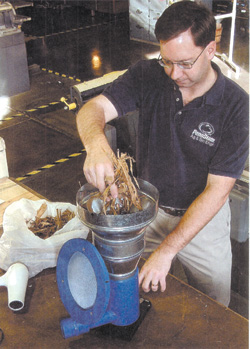
The "Vortex" forage sample dryer is faster and easier than other methods used to determine moisture content, says Dennis Buckmaster, who designed the inexpensive, simple-to-build device.
Buckmaster is an Associate Professor of Agricultural Engineering at Penn State University. Using an ordinary hair dryer, plastic piping, round duct reducers, a furnace filter, some window screen, a couple pieces of wood and some fastening hardware, Buckmaster says farmers can make their own sample dryer. Alternately, they can order a pre-built one from Penn State University Agricultural Engineering students who are building them as a fund-raiser.
By weighing the original sample, then alternately drying it and weighing it again until there's no change in the weight, farmers can use the dry-to-wet weight ratio to calculate the percentage of moisture.
When using a microwave, it's necessary to dry the sample for two minutes at a time, stirring in between, then cutting back to one minute, or 45 seconds until the weight ceases to change.
"With the Vortex, samples will not burn because there's so much hot, dry air. The big advantage of this is that you don't have to baby-sit the Vortex dryer like you do a microwave oven," he says. "Hay that's at 30 per cent moisture will be dry in 15 minutes. Silage or balage will be dry in an hour for sure, possibly less. If you're not sure, you just put it in for a little longer and check the weight again."
Buckmaster recommends using a 200-g sample, which is larger than what most people dry in a microwave. Besides the fact that a larger sample provides a more accurate result, the Vortex dries the sample more uniformly because the unit forces air through and around it.
While acknowledging that a microwave may produce results faster, the Vortex inventor says his inexpensive tester allows the farmer to possess three units and, in the same amount of time, triple the data they collect.
"People who sample in microwaves often don't take the time to do replicate or triplicate samples because they have to stand there," he says. "Basing your decision to fill a whole silo on that one number can be risky. If there is only one sample, there is no clue whether it's a good or bad sample. With three numbers, you can take an average."
If and when the hair dryer wears out, it's an easy and cheap component to replace.
Buckmaster points out that the Vortex is faster, less expensive and more accurate than a Koster tester, a popular brand of forage sample dryer on the market.
